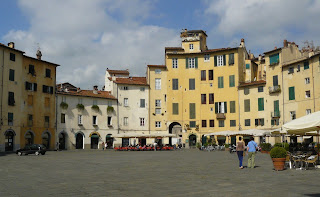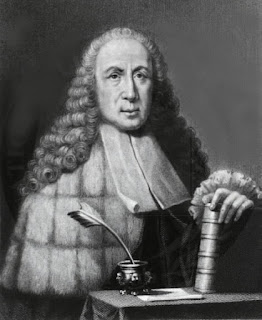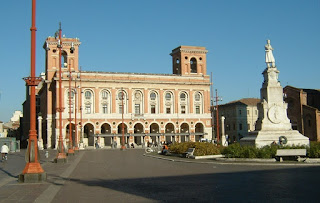American champion was born and grew up in Italy
 |
| Mario Andretti raced as an American but was born in Montona, then part of Italy |
Andretti’s career was notable for his versatility. He is the
only driver in motor racing history to have won an Indianapolis 500, a Daytona
500 and an F1 world title, and one of only two to have won races in F1, Indy Car,
NASCAR and the World Sportscar Championship. He is the last American to have won
an F1 Grand Prix.
He clinched the 1978 F1 title at the Italian Grand Prix at
Monza in September, the 14th of the 16 rounds, having led the
standings by 12 points going into the race.
He crossed the line first and even though he was demoted to sixth place –
the result of a one-minute penalty for going too soon at a restart – it was
enough to mean he could not be caught.
His celebrations were muted, however, after his close friend, the Swedish driver Ronnie Petersen, died from complications to injuries he suffered in a crash on
the first lap.
Andretti’s early years in Italy were fraught with
difficulties. He and his twin brother, Aldo, were brought up by their father
Gigi, a farm manager, and their mother Rina
in a loving family but at the end of the Second World War their lives were
turned upside down when the allies ceded Istria to Yugoslavia and they found themselves
living in a Communist country.
 |
| Mario Andretti with Lotus boss Colin Chapman (left) during the 1978 Formula One championship-winning season |
In 1955, the family decided to emigrate to the United States,
leaving all of their possessions behind and settling in Nazareth, Pennsylvania.
The twins were already enthusiastic about cars. As five-year-olds in their home village, they
had raced each other down the steep streets in hand-made wooden cars. Later, while they were living in Lucca, they
watched a section of the Mille Miglia endurance race and Mario became
captivated by Alberto Ascari, the two-times F1 World Champion, who won the
race.
In Nazareth they went to work in an uncle’s garage and quickly
learned about cars. Their first experience
of competition in America was on a dirt track near their home, where they took
part in stockcar races unbeknown to their parents, in a car they had borrowed
from their uncle’s workshop.
Although Aldo was unlucky that an injury hampered his
progress, Mario quickly showed his talent, winning 20 races in his first two
seasons.
 |
| The Lotus 79 car in which Andretti won the 1978 title |
He defended the title successfully in 1966, winning eight
races, and claimed further Indy Car championships in 1969 and 1984.
Andretti’s Formula One debut came in 1968, three years after
he had met Colin Chapman, the British owner of the Lotus team, and outlined his
ambitions. Chapman had told him to get
in touch once he thought he was ready and, true to his word, gave the Italian-American
an opportunity.
It took him three years to achieve a first F1 win, in the
South African GP in 1971, driving for Ferrari, and another five years to clinch
his second, in the Japanese GP in 1976, having returned to Chapman’s garage for
John Player Team Lotus.
 |
| Mario Andretti today |
Andretti continued to race competitively until he was 54. By the time he decided enough was enough, his list of honours, in addition to his four Indy Car titles, his wins at
the 1969 Indianapolis 500 and 1967 Daytona 500 events and his F1 title, included three 12
Hours of Sebring victories, a USAC dirt track title and an International Race
of Champions victory.
In all, he competed in 879 races, of which he won 111. He is
the only driver to have won Indy Car races in four decades.
In retirement, Andretti has pursued a number of business
interests, including a winery, worked as an ambassador for a number of
companies and made frequent television appearances. Both his sons, Michael and Jeff, became
drivers, Michael repeating his father’s success by becoming Indy Car champion
in 1991. His grandson, Marco – Michael’s son – is also a racing driver.
 |
| Motovun, formerly Montona, sits on top of a hill in Istria, the area of Croatia that was in Italy when Andretti was born |
Montona – now known as Motovun and part of Croatia – was an
idyllic hilltop village as Mario and his brother, Aldo, were growing up, surrounded
by beautiful rolling countryside. The summit
could be reached by climbing a 1,052-step staircase, said to be the longest
staircase in the world, and anyone with the stamina to complete the climb would
be rewarded with stunning views over the vineyards of the Quieto river valley.
The main square is named after Andrea Antico, a Renaissance music printer who invented
the first wooden types for printing music scores.
Lucca, where the Andrettis lived until they were granted visas
to emigrate to the United States, is situated in western Tuscany, just 20km (12
miles) from Pisa, and 80km (50 miles) from Florence. Its majestic
Renaissance walls are still intact, providing a complete 4.2km (2.6 miles)
circuit of the city popular with walkers and cyclists. The city has many charming cobbled streets and
a number of beautiful squares, plus a wealth of churches, museums and galleries
and a notable musical tradition, being the home of composers Alfredo Catalani,
Luigi Boccherini and the opera giant, Giacomo Puccini.
More reading:
Riccardo Patrese, the first F1 driver to compete in 250 Grands Prix
Michele Alboreto, the last Italian to challenge for the F1 drivers' title
A crash kills Alberto Ascari, twice F1 world champion
Also on this day:
1915: The birth of jam and juice maker Karl Zuegg
1942: The birth of goalkeeper Dino Zoff, the oldest player to win a World Cup
Selected reading:
The Golden Age of Formula One, by Rainer W Schlegelmilch
Driven: The Men Who Made Formula One, by Kevin Eason
(Picture credits: Top picture of Andreotti by Gillfoto; Andretti with Chapman by Suyk, Koen; Andretti today by Jonathan Mauer; Piazza in Lucca by Robespierre; via Wikimedia Commons)
More reading:
Riccardo Patrese, the first F1 driver to compete in 250 Grands Prix
Michele Alboreto, the last Italian to challenge for the F1 drivers' title
A crash kills Alberto Ascari, twice F1 world champion
Also on this day:
1915: The birth of jam and juice maker Karl Zuegg
1942: The birth of goalkeeper Dino Zoff, the oldest player to win a World Cup
Selected reading:
The Golden Age of Formula One, by Rainer W Schlegelmilch
Driven: The Men Who Made Formula One, by Kevin Eason
(Picture credits: Top picture of Andreotti by Gillfoto; Andretti with Chapman by Suyk, Koen; Andretti today by Jonathan Mauer; Piazza in Lucca by Robespierre; via Wikimedia Commons)













